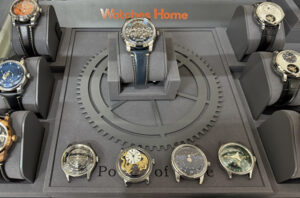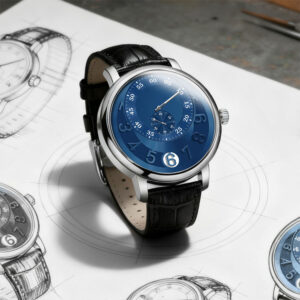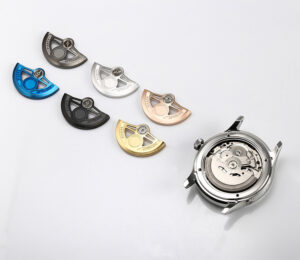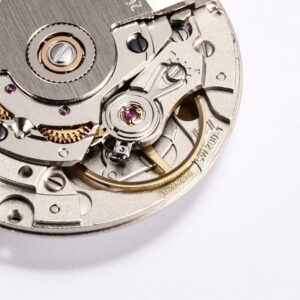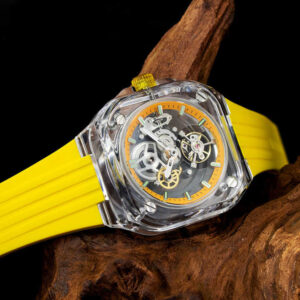Automatic vs Mechanical Watches: Key Differences for OEM Buyers
Overview & Core Definition
The automatic watch is a specialized subset of mechanical watches, distinguished solely by its self-winding mechanism via a rotor. This clarifies the question: “are automatic and mechanical watches the same?” – yes, automatic watches are mechanical, with differences confined to winding method only.
This article presents a comprehensive, professional analysis for brand owners and wholesalers (B2B/OEM)—covering movement architecture, cost implications, manufacturing, maintenance, procurement strategies, brand positioning, and after-sales frameworks.
Definitions & Architecture (B2B-Centric)
Mechanical (Manual-Wind)
A manual-wind mechanical watch relies on crown winding to drive the mainspring, which then powers the gear train, escapement, and balance wheel. Its structure is minimalist, lacking a rotor, allowing for thinner case profiles—beneficial for dress watch designs. Fewer components also mean lower assembly complexity and reduced defect risk.
https://watcheshome.com/product/discover-the-modifled-miyota-8215-watch-movement/
Automatic (Self-Winding)
Building on the manual movement, an automatic watch adds a rotor and reverser mechanism, powered by wrist motion. The rotor’s presence impacts case thickness and design—especially when considering exhibition case backs.
-
Authoritative reference: Wikipedia notes that an automatic watch is a mechanical watch with self-winding functionality.
-
Implications for thickness and structure: The additional components require OEMs to plan cases and molds accordingly.
Key Clarification
Automatic watches are not electronic or quartz—they remain mechanical watches with an added winding mechanism. Clear differentiation avoids common confusion in procurement and sales teams.
Functional & Cost Implications for OEM
Winding & Power Reserve
-
Manual-wind: Requires regular winding, appealing for its ritualistic value—best suited for limited or collector-focused lines.
-
Automatic: Offers convenience and practical power reserves (typically 40–80 hours, sometimes longer), which streamlines inventory turnover and reduces user friction.
Thickness, Durability & Service
Automatic movements’ complexity adds thickness and weight, necessitating higher tooling costs and potentially increasing service frequency due to additional components. Conversely, manual-wind watches remain sleek and efficient.
Accuracy & Reliability Expectations
Performance hinges on caliber quality—not winding type. OEM buyers should set acceptance criteria such as ±10 sec/day accuracy, power reserve loss rates, anti-magnetic performance, and shock recovery thresholds.
BOM & Assembly Considerations
-
Movement sourcing: Swiss (ETA/Sellita), Japanese (Seiko/Miyota), Chinese (Sea-Gull)—each with distinct pricing, lead times, and support structures.
-
Rotor customization: Options include branded engravings, plating, skeleton or full rotors—each affecting cost and quality variance.
https://watcheshome.com/watch-movement-manufacturer/
Market Positioning & Portfolio Strategy
Segmentation & Use Cases
-
Manual-wind: Ideal for high-end, heritage-driven, or exclusive collaboration lines—great for storytelling and premium placement.
-
Automatic: Optimal for mainstream product lines—daily wear, sport, or dive models—facilitating standardized production and distribution.
Price Bands & Margin Model
Structuring price tiers by origin and complexity allows for strategic SKU positioning. Autos may cost more, but higher retail acceptance often improves margin performance.
Channel Alignment
Position automatic models as volume SKUs, offering color/movement variants via matrix planning. Use manual-wind as hero SKUs to elevate brand perception.
Brand Story & Compliance
-
Positioning narrative: Manual-wind = craftsmanship tradition; Automatic = modern convenience.
-
Compliance: Include testing for water resistance, shock, anti-magnetic features, as well as REACH/RoHS and nickel release compliance in QC protocols to enhance B2B credibility.
Customization & Differentiation for OEM
Movement-Level Customization
-
Auto: Customize rotor design, plating, and winding efficiency.
-
Manual: Focus on ultra-thin designs, visual finishing, and winding feel calibration.
Case, Dial & Bracelet Design
Due to case thickness differences, auto models require greater tooling tolerance—manual-wind models offer flexibility. Bracelets and dials must align aesthetically with movement characteristics.
QC & After-Sales Framework
Define factory test procedures (power reserve, accuracy, magnetic resistance, shock tests) and B2B support (spare parts, tooling guides, training videos) for after-sales readiness.
Decision Matrix & Buyer Takeaways
Quick Matrix
| Objective / Channel | Manual-Wind Advantages | Automatic Advantages |
|---|---|---|
| Brand image / lifestyle | Thin profile, high craftsmanship | Functional convenience |
| Cost control | Simple structure, fewer parts | Standardization, economies of scale |
| Wholesale adaptability | Higher education cost | Smooth sales & inventory flow |
Offer this decision matrix as a downloadable PDF/Excel for buyer usability.
Risk / Cost Checklist
-
Movement availability and buffer stock considerations
-
Lead time and tooling modification costs
-
After-sales warranty budgeting and education (“automatic = mechanical subtype”) to reduce returns and complaints.
Final Recommendations
-
Adopt a dual product-line strategy: Automatic for mass-market volume, manual-wind for premium storytelling.
-
Target SKU split: 80% automatic, 20% manual-wind, with periodic strategic reviews.
Contact Us Now https://watcheshome.com/contact/
To receive detailed technical specifications, pricing proposals, or product samples, please fill out the inquiry form below or contact us directly.
Our strong engineering capabilities and project collaboration experience position us as your ideal OEM partner for bespoke watch solutions.


